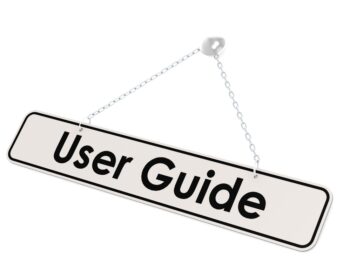Settling workers’ compensation cases is an important part of being a proactive and effective member of the claims management team. It also allows interested stakeholders to concentrate their efforts on other more burdensome cases. Most importantly, it reduces unnecessary costs to a program’s bottom line. Working with an experienced workers’ compensation attorney can ensure you get the best agreement for both the employer and the injured worker.
What is the Claims Management Toolbox?
Having a “toolbox” at one’s disposal is important to being a great claims handler. Like a toolbox a mechanic uses to practice their trade, claim handlers need one as well to fix, accomplish or avoid a number of issues. Caution – use these tools with care and only when necessary.
Click Link to Access Free PDF Download
“8 ‘Think Outside the Box’ Tactics to Settle Workers’ Comp Claims”
Limited Compromise Settlements
All members of the claims management team will agree, the only good file is a closed file. In some instances, this is not possible given the interests of the claimant or on advice of their attorney. In cases that cannot completely settle, a claims handler should examine whether the claim presents an opportunity for a limited compromise settlement.
Under this type of settlement, indemnity benefits such as TTD, TPD, PPD and PTD are closed out. The only benefits available to the employee include past and/or future medical benefits.
Limited Compromise Settlements have some advantages:
- Reduces costly exposures that may be present on a claim. This is especially the case when an employee is not incurring much in terms of ongoing medical benefits, but is struggling with return to work issues; and
- Studies indicate claimants in workers’ compensation claims tend to reduce the frequency of their medical care and treatment after closing out indemnity benefits. Limited compromise settlements that leave open future medical benefits can also be helpful in instances where the parties may want to consider a Medicare Set-aside, but the cost and/or future medicals that are reasonable is astronomical.
Effective use of Hold Harmless Agreements
A “hold harmless” agreement is another tool members of the claims management team can use to settle cases. When using such agreements, the parties to a settlement are creating a contract where one party agrees to release another from all legal claims. In the context of workers’ compensation claims, this is mainly used when it comes to the reimbursement of past or future medical expenses and liens.
Such agreements can be used in many instances to expatiate settlements. This includes:
- Delay in the receipt of medical bills related to a claim where the amount is either known, or reasonably expected to be known; and
- One party to a claim has the ability to extinguish the interests or potential intervention rights of a known third-party.
Hold harmless agreements should be used with caution. While such agreements “require” cooperation from the party receiving protection, it might not necessarily be the case if litigation occurs. In fact, the indemnified party (the party receiving protection) may need to engage in litigation in order to secure cooperation.
Hold harmless agreements should also be avoided in instances where Medicare and Medicaid have an interest in a claim. The statutory framework establishing these federal programs does not prevent the applicable government agency from enforcing their rights against any party to a workers’ compensation claim. This rationale has been affirmed by a long line of case law interpretations.
Other Tools for Effective Claim Resolution
Settling workers’ compensation claims requires members of the claims management team to take affirmative steps to remove barriers to settlement by using their toolbox.
- Develop strategies on their teams to identify cases ripe for settlement and take steps to close files. This sometimes includes picking up the telephone and making a settlement inquiry or offer. Once identified, these cases can be submitted to a competent structured settlement consultant who may be in the best position to determine the likelihood and course for settlement;
- Using mediation and promoting the use of settlement conferences to move claims toward a timely resolution. Be prepared for these events. One may also want to consider bringing a laptop computer and printer to these sessions. This allows for the drafting of the settlement agreement on the spot and avoid delays in final execution; and
- Implement effective medical management programs to lower prescription drug costs on all files.
Conclusions
The development of a claims “toolbox” is one step interested stakeholders can use to reduce workers’ compensation costs. This is accomplished by promoting the closure of files, or at a minimum resolving some issues on a file to narrow the issues in dispute.

Author Michael Stack, CEO Amaxx LLC. He is an expert in workers’ compensation cost containment systems and helps employers reduce their workers’ comp costs by 20% to 50%. He works as a consultant to large and mid-market clients, is a co-author of Your Ultimate Guide To Mastering Workers Comp Costs, a comprehensive step-by-step manual of cost containment strategies based on hands-on field experience, and is the founder & lead trainer of Amaxx Workers’ Comp Training Center.
Contact: mstack@reduceyourworkerscomp.com.
Workers’ Comp Roundup Blog: https://blog.reduceyourworkerscomp.com/
©2019 Amaxx LLC. All rights reserved under International Copyright Law.
Do not use this information without independent verification. All state laws vary. You should consult with your insurance broker, attorney, or qualified professional.
















